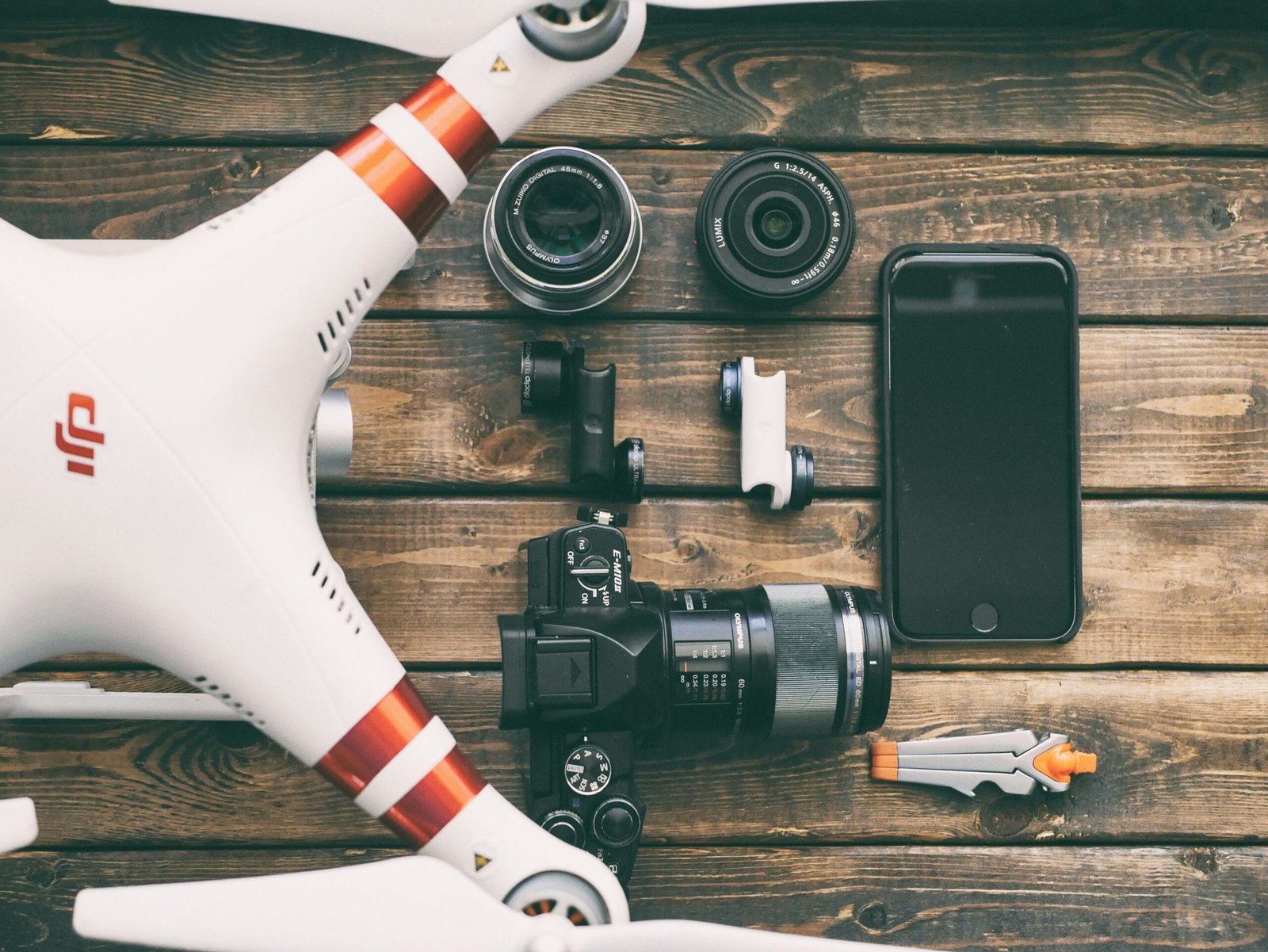Wingcopter stands out as a pioneering entity in the drone industry, recognized for its commitment to transforming last-mile delivery and medical logistics through cutting-edge technology. Founded in 2017 by Tom Plümmer and Anton Gernhardt, the company has rapidly evolved, capitalizing on the growing demand for efficient and reliable drone solutions. With a focus on promoting sustainable logistics, Wingcopter aims to bridge distances and reduce delivery times, primarily targeting remote and underserved areas.
Throughout its brief but remarkable history, Wingcopter has achieved several significant milestones that underscore its status as an industry leader. The company’s flagship product, the Wingcopter 198, is an innovative tilt-wing drone designed to deliver packages over long distances with unmatched speed and efficiency. This drone not only facilitates the delivery of essential goods, including medications and medical supplies but also helps reduce carbon emissions associated with traditional delivery methods, thereby supporting environmental sustainability.
In addition to its technological advancements, Wingcopter has established strategic partnerships with various organizations and companies within the healthcare and logistics sectors. These collaborations have enabled the company to implement its drone solutions effectively in real-world scenarios, illustrating the practical implications of its technology. Notably, Wingcopter has engaged in projects focused on delivering vaccines and critical medical supplies in hard-to-reach areas, emphasizing its mission to save lives and improve health outcomes.
The recent $35 million funding marks a pivotal moment in Wingcopter’s journey, paving the way for further technological advancements and expansion into new markets. This investment not only highlights investors’ confidence in Wingcopter’s innovative approach but also signals increased competition in the rapidly evolving drone landscape. As Wingcopter continues to innovate, its impact on the logistics industry is poised to grow, making it a company to watch in the coming years.
Details of the Funding Round
Recently, Wingcopter announced the successful completion of a $35 million funding round, a significant milestone for the company as it seeks to expand its operations and enhance its drone technology. This funding was primarily led by renowned investors who are strategically inclined towards advancing technological innovations in the aviation sector. Key players in this funding round include Forward Partners, a well-established investor known for its early-stage venture capital in technology-driven startups, and several angel investors with extensive backgrounds in aeronautics and robotics.
The motivations behind these investors’ participation in Wingcopter’s funding round are multi-faceted. Notably, the increasing demand for efficient delivery solutions, particularly in remote and underserved areas, has created a conducive environment for the growth of drone technology. Wingcopter’s unique approach to integrating artificial intelligence and advanced aerodynamics in its drone systems aligns impeccably with market needs; hence, investors are keen on supporting such innovations. Furthermore, the global push for sustainable logistics solutions has positioned Wingcopter favorably in the eyes of environmentally-conscious investors looking to make a positive impact.
This substantial infusion of capital is expected to play a pivotal role in accelerating Wingcopter’s research and development initiatives. The funding will allow the company to enhance its existing product line while also developing next-generation drones that incorporate cutting-edge features, such as greater payload capacities and longer flight ranges. This investment marks a critical juncture for Wingcopter, placing it on an ambitious path to not only reinforce its current market position but also to potentially broaden its operational reach into new sectors, such as emergency response and medical supply delivery.
Significance of Next Generation Drone Technology
Next generation drone technology represents a crucial evolution in unmanned aerial vehicles (UAVs), leading to significant advancements across multiple sectors. Enhanced flight capabilities enable drones to operate in diverse environmental conditions, extending their usability for various applications. For instance, improved endurance and range allow these drones to cover larger areas, making them particularly beneficial for industries such as e-commerce, where efficient delivery systems are in high demand.
In addition to improved flight performance, increased payload capacity is another key aspect of next generation drones. This advancement allows for the transport of heavier and bulkier items, facilitating applications in healthcare, such as the delivery of medical supplies and equipment. The ability to carry more substantial loads can dramatically impact the efficiency of supply chains, particularly in urgent situations requiring rapid response.
The integration of advanced software and sophisticated artificial intelligence systems is also critical to this technological progression. AI-powered drones can optimize their flight paths, navigate autonomously, and adapt to changing conditions in real-time. This level of intelligence not only enhances operational efficiency but also improves safety standards by reducing the likelihood of human error. Furthermore, machine learning algorithms enable drones to analyze data collected during flights, providing valuable insights for industries like agriculture, where aerial imagery can inform crop management practices.
As the demand for innovative logistics solutions continues to rise, next generation drone technology is becoming increasingly vital. By addressing the complexities of modern supply chains, healthcare logistics, and precision agriculture, these advanced UAVs have the potential to revolutionize the way goods and services are delivered. Their capacity to merge enhanced functionality with intelligent software solutions will play a foundational role in shaping the future of various industries and their operational frameworks.
Potential Applications and Impact
The advent of Wingcopter’s next generation drone technology heralds a transformative era across various sectors, particularly in urban delivery services, healthcare logistics, and emergency response. In urban environments, the ability to facilitate swift delivery of goods directly to consumers could revolutionize e-commerce. This capability would not only enhance convenience for consumers but could also significantly reduce road congestion and lower carbon emissions associated with traditional delivery methods. The integration of drones into urban logistics can lead to more efficient supply chains and contribute to the growth of vertical industries focused on last-mile delivery solutions.
Moreover, the healthcare sector stands to benefit immensely from the deployment of Wingcopter drones. These unmanned aerial vehicles (UAVs) can be utilized to transport medical supplies, vaccines, and life-saving medications to remote areas or regions experiencing logistical challenges. During public health emergencies, such as the outbreak of infectious diseases, the ability to quickly deliver resources could have life-saving impacts. Additionally, drones can play a significant role in medical emergencies, enabling rapid response teams to reach patients in need with critical supplies, thus improving overall healthcare outcomes.
The implications extend beyond logistics into the social and economic landscape. By adopting drone technology, companies can achieve higher operational efficiency and reduce costs associated with traditional transportation methods. Furthermore, the proliferation of such UAVs can create new job opportunities, not just in drone operations but also in related fields such as maintenance, programming, and regulatory compliance. However, it is essential to consider the regulatory frameworks and public acceptance that accompany the widespread use of drones. The successful implementation of Wingcopter’s technology will likely depend on collaboration between industry stakeholders, regulatory bodies, and the communities they serve to ensure safety and privacy are prioritized in this innovative shift.
Regulatory Challenges and Opportunities
The regulatory landscape for drone technology has been evolving rapidly, reflecting both the growth of the industry and the increased attention from governmental bodies. As Wingcopter aims to launch its next generation drones, it must navigate a complex web of regulations that vary by region and application. Current regulations governing the use of drones often focus on safety, privacy, airspace management, and operational limits. For example, many jurisdictions require operators to maintain visual line-of-sight with their drones and to adhere to altitude restrictions, which can constrain the operational capabilities of advanced drone systems.
One significant challenge that Wingcopter may face involves the integration of drones into existing air traffic systems. With the increasing number of commercial drone operations, regulators are called upon to establish frameworks that ensure seamless coexistence between manned and unmanned aircraft. This includes addressing issues related to airspace congestion, collision avoidance, and noise regulation. As Wingcopter seeks to implement its innovative technologies, it will need to engage closely with aviation authorities to ensure compliance and security, potentially delaying deployment timelines.
However, regulatory frameworks also present opportunities for collaboration. Proactive engagement with regulatory bodies can lead to the development of policies that not only ensure safety but can also promote innovation. Collaborative efforts, such as pilot programs or research initiatives, could facilitate a better understanding of drone capabilities, addressing safety concerns while allowing companies like Wingcopter to showcase their advancements. By working with regulators, Wingcopter can help shape industry standards that support both safety and technological advancement, paving the way for broader acceptance and integration of drone technology in various sectors.
Environmental Considerations
The proliferation of drone technology is often heralded as a transformative development across various sectors, including delivery services. However, it is essential to examine the environmental implications of this technology, particularly when compared to traditional delivery methods that rely on vehicles powered by fossil fuels. Unlike conventional delivery systems, which contribute significantly to greenhouse gas emissions and urban congestion, drone operations promise a more sustainable approach. This includes reduced emissions, as drones typically require less energy to operate than standard delivery vans.
Wingcopter, in particular, is committed to implementing sustainable practices within its operations. One focal point is energy efficiency, which is crucial for minimizing the carbon footprint associated with drone flights. By utilizing advanced battery technology and regenerative systems, Wingcopter aims to enhance its operational sustainability. Furthermore, the company is exploring opportunities to utilize renewable energy sources, such as solar power, to recharge drone batteries, thereby further reducing its reliance on non-renewable energy.
Noise pollution is another significant concern in the realm of drone deliveries. Wingcopter is aware of the potential disturbances caused by flying drones and is actively working on solutions to mitigate noise levels. The design engineers at Wingcopter focus on developing quieter propulsion systems that can operate effectively while producing minimal noise. This effort not only aims to improve the user experience but also seeks to ensure that drone operations remain unobtrusive in both urban and rural environments.
Moreover, Wingcopter’s commitment extends to the materials used in drone construction. The adoption of eco-friendly materials ensures that the environmental impact of manufacturing is kept to a minimum. By focusing on sustainability, Wingcopter is setting a benchmark for the industry, demonstrating that innovation and environmental stewardship can go hand in hand.
Future Roadmap for Wingcopter
Following the recent funding of $35 million, Wingcopter is poised to advance its strategic roadmap significantly. The funds will primarily be allocated towards the research and development of their next-generation drone technology, which is aimed at enhancing delivery services and operational efficiency. A critical milestone in the coming years will be the introduction of their new drone models, designed to accelerate logistics and healthcare deliveries. This new technology will ensure improved payload capacity, reduced operational costs, and enhanced navigational capabilities in variable environments.
As part of its growth strategy, Wingcopter plans to establish partnerships with leading logistics companies and healthcare providers. These collaborations will facilitate an integrated drone delivery system, making it easier to reach remote and underserved areas. Additionally, Wingcopter is targeting strategic alliances with technology firms to leverage cutting-edge advancements such as artificial intelligence and machine learning in drone navigation and operations. Such partnerships are expected to pave the way for innovative solutions in logistics, thereby revolutionizing the way goods are transported.
Market expansion is also pivotal in Wingcopter’s roadmap. The company aims to penetrate emerging markets, where the demand for efficient delivery systems is increasing, particularly in urban and rural settings. By focusing on regions with limited transportation infrastructure, Wingcopter intends to fill a critical gap, providing a reliable alternative for goods transportation. The sustained efforts in market research and customer feedback will allow them to tailor their services to fit various regional needs effectively.
Overall, Wingcopter’s future roadmap emphasizes a blend of innovation, collaboration, and strategic market positioning. This approach will not only enhance their technological offerings but will also reinforce their presence within the rapidly evolving drone industry.
Expert Opinions and Industry Reactions
The recent announcement that Wingcopter has secured $35 million in funding has generated significant interest and discussion across the drone technology landscape. Industry analysts and experts have weighed in, closely examining the implications of this funding round for both the company and the broader market. The funds will enable Wingcopter to enhance its research and development efforts, focusing on the next generation of drone technology, which is poised to revolutionize various sectors including logistics, healthcare, and agriculture.
Competitors have acknowledged Wingcopter’s potential and view this financial backing as a strong endorsement of its innovative trajectory. “Wingcopter has positioned itself uniquely within the drone space, particularly with its tilt-rotor technology, which offers significant advantages in maneuverability and operational range. This funding is a testament to the confidence investors have in its future,” stated an analyst from a leading market research firm. Such endorsements highlight the competitive edge Wingcopter holds in a rapidly evolving market landscape.
Technology experts also emphasize the importance of adaptability in the drone industry. With the influx of capital, Wingcopter aims not only to enhance its existing product line but also to pioneer advancements in autonomous navigation and AI-driven operations. This dual approach demonstrates a forward-thinking strategy that could set industry standards. “Companies that invest in both cutting-edge technology and efficient operations will ultimately succeed. Wingcopter appears to understand this balance,” noted a technology consultant familiar with industry trends.
Furthermore, the drone market is experiencing an unprecedented surge in demand, particularly in response to global challenges such as supply chain interruptions and the need for swift delivery solutions in the healthcare sector. Analysts predict that companies like Wingcopter, which are equipped with adequate funding and visionary leadership, are well-positioned to capitalize on these burgeoning opportunities.
Conclusion: The Future of Drone Technology with Wingcopter
The recent announcement of Wingcopter securing $35 million in funding marks a significant milestone in the advancement of drone technology. This investment will enable the company to push the boundaries of what is possible within the realm of unmanned aerial vehicles (UAVs). As we have explored throughout this article, Wingcopter is not only committed to enhancing the functionality of drone systems but also to addressing various industry needs, such as logistics, delivery, and emergency response.
Looking ahead, the future of drone technology is poised for remarkable transformation. Companies like Wingcopter are at the forefront of this evolution, leveraging cutting-edge technology to design and implement next-generation drones that are not only more efficient but also environmentally sustainable. With innovations in areas such as battery life, payload capacity, and automated navigation, the potential applications for these advanced UAVs are vast, encompassing sectors like healthcare, agriculture, and public safety.
The anticipation surrounding Wingcopter’s forthcoming projects underscores the growing importance of drone technology in modern society. As the company refines its capabilities and expands its reach, the broader implications for global supply chains and disaster response are profound. The envisioned integration of drones into everyday operations suggests a future where aerial delivery services can significantly reduce time and costs associated with traditional logistics.
In conclusion, the impact of Wingcopter’s initiatives on drone technology holds the potential to reshape industries and improve lives. As they strive to lead this charge, it is essential for stakeholders, regulators, and consumers alike to remain informed and engaged with these developments. The evolution of drone technology with Wingcopter promises to usher in innovative solutions that are set to redefine the landscape of how we perceive and utilize drones in our daily lives.













Leave feedback about this